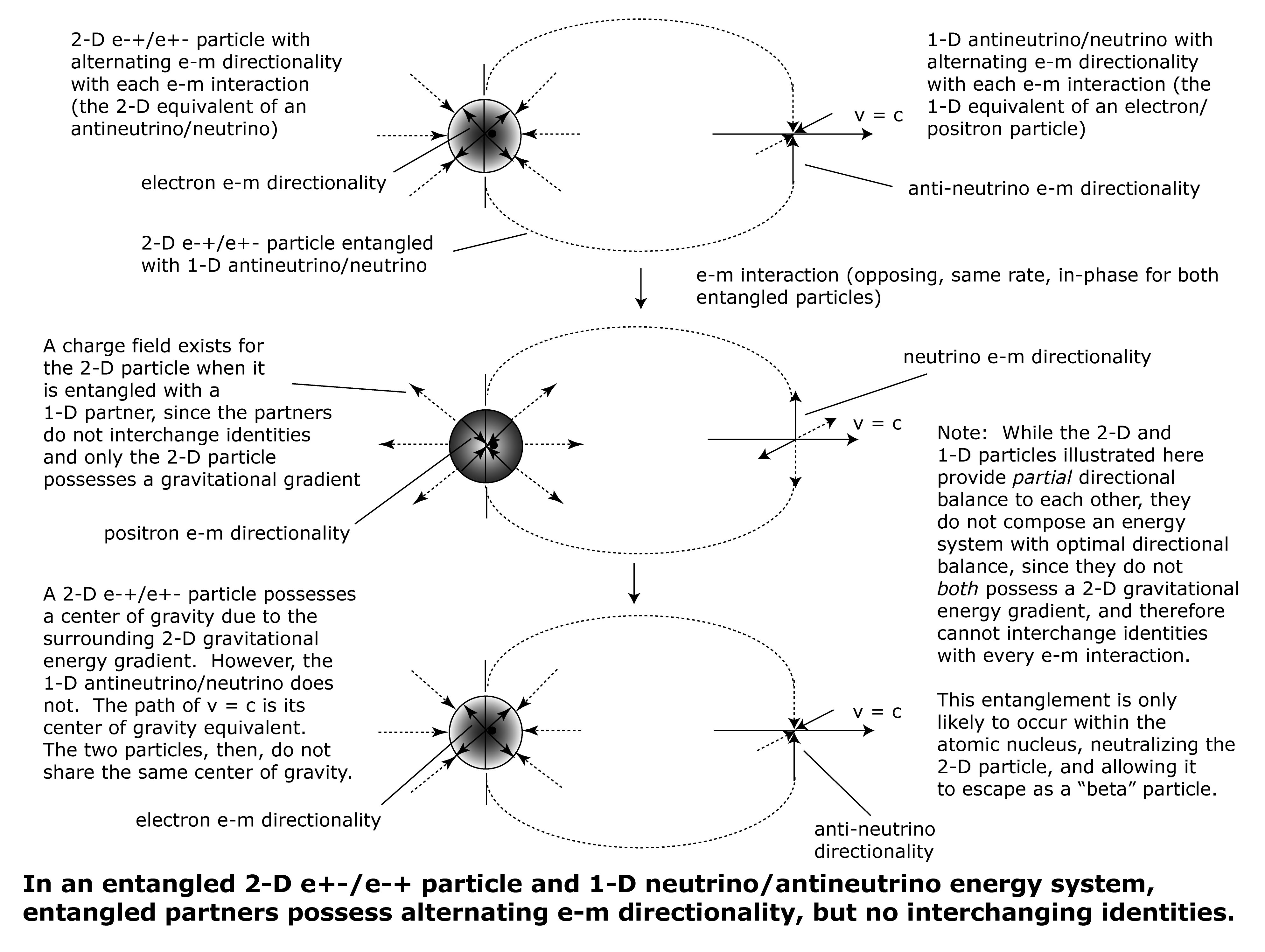 Entanglement provides directional balance of two directionally opposing electromagnetic energy systems through alternating e-m directionality of each entangled partner with every e-m interaction. The alternating e-m directionality of two entangled partners must be in-phase with each other – that is, the e-m directionality must be opposing with each e-m interaction.
Entanglement provides directional balance of two directionally opposing electromagnetic energy systems through alternating e-m directionality of each entangled partner with every e-m interaction. The alternating e-m directionality of two entangled partners must be in-phase with each other – that is, the e-m directionality must be opposing with each e-m interaction.
Identical 2-D e-m entangled particles possess both in-phase alternating e-m directionality and interchanging identities. This represents the strongest type of entanglement, providing optimal directional balance. In the case of electric flow within a conductor, for example, an orbital e-+/e+- particle may “jump” from one atom to another (taking the place of an orbital e-+/e+- particle at the same energy level) without becoming
disentangled or re-entangled due to interchanging identities. The entangled nuclear e+-/e-+ partner cannot tell the difference between it and its previous entangled orbital e-+/e+- partner.
When a 2-D e-+/e+- particle becomes entangled with a 1-D neutrino or anti-neutrino, the two entangled partners possess in-phase alternating e-m directionality with each e-m interaction. However, since they consist of different dimensionalities (1-D = no gravitational energy gradient), they are not identical particles, and therefore cannot interchange identities. While the 1-D and 2-D entangled particles provide each other directional balance, they do not possess interchanging identities or the optimal directional balance of identical particles.
